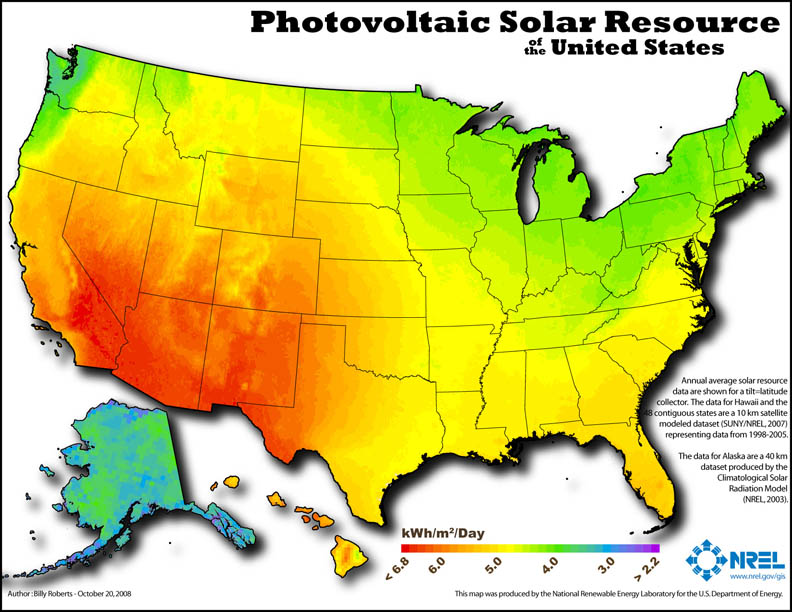forum
library
tutorial
contact

Solar Power is Emerging as a Major Source of
Supply for the Future, Council Planning Suggests
by John Harrison
NW Council, Apirl 12, 2021
|
the film forum library tutorial contact |

|
Solar Power is Emerging as a Major Source of
by John Harrison
|
Council analysis shows the value of energy efficiency to the Northwest economy
 It's no joke to say the future of the electricity supply in the Northwest -- the entire West Coast, for that matter -- is sunny.
It's no joke to say the future of the electricity supply in the Northwest -- the entire West Coast, for that matter -- is sunny.
Solar power is becoming a major player in the energy market. As the Council's Power Division analysts continue working on modeling scenarios to determine the best mix of generating and demand-side management options (energy-efficiency and demand response) to ensure a reliable, adequate, and affordable future power supply, the sun keeps rising. The modeling results are still preliminary, but the message so far is clear.
The Council plans to release a draft of its 2021 Power Plan, the eighth in the Council's 40-year history, in the summer for public comment, then adopt the final plan in the fall. By law, the Council revises its Northwest power plan every five years, forecasting demand for electricity and assigning resources to meet that demand, 20 years into the future.
Never in the Council's long history of power planning has solar been so dominant in the assessments of future scenarios. Why now?
In brief, the answer is twofold: 1) the low cost of solar power -- lower now than it ever has been -- and 2) the advent of policies to reduce carbon emissions throughout the economy, including in electricity generation.
"We are seeing a huge solar buildout," said Ben Kujala, the Council's power planning director. "This wouldn't even be a discussion if the panels weren't so cheap." Kujala reviewed the power planning effort to date at the April meeting of the Council's Power Committee.
Not only are solar panels inexpensive, but once a solar power plant is built, the cost of maintenance and operation are low, as well. There is no ongoing fuel cost, for example. That's an important consideration in light of the carbon-reduction goals established in state policy, and in community and utility goals, throughout the four Northwest states, and California.
As the Council's analysts continue to model future scenarios of power demand, cost, carbon emissions reduction, and mixes of resources -- thousands of modeling runs, in fact -- renewable resources like wind and solar power continue to comprise large shares of future power generation.
"There is a lot of wind, but solar is the big driver," Kujala said.
Thousands of megawatts of solar generation have been built in sunny California, but solar is showing up everywhere on the West Coast in the Council's modeling, so far. Wind power has been the primary renewable resource in the Northwest for the last decade or more, with comparatively small amounts of solar. But now, the future is looking strikingly different.
"It's solar everywhere in the West," Kujala said. "In many different potential future markets, the common element is solar."
The challenge for the Council's modeling -- one of the challenges, at least -- is understanding how the Northwest power system, primarily hydropower, will interact with the addition of large amounts of solar generation in the future. Hydroelectric dams can generate power 24 hours a day, but solar plants only generate when the sun is up. It is critical to understand how variable solar power integrates with constant hydropower -- which can vary in output from year to year depending on the water supply, Kujala said. Adding to the complexity is the fact that for now, at least, the biggest share of solar power on the West Coast is generated in California, but the Northwest and Southwest power systems are integrated. Demand for power in California, for example, can affect the power supply in the Northwest. "Ramping" -- meeting the ups and downs of power demand -- and flexibility -- the ability to provide power quickly when it is needed -- are important considerations.
"How the regional system reacts to the need for ramping and flexibility beyond our borders is the challenge," Kujala said. "Adding climate change concerns about impacts to the hydropower system took us down a path of redeveloping our model to better understand the dynamic interaction of the hydropower system with the rest of the western generating fleet."
Related Sites: Energy Efficiency has Cut Regional Power Use by 25 Percent Since 1990 by John Harrison, NW Council, 6/18/18
learn more on topics covered in the film
see the video
read the script
learn the songs
discussion forum
